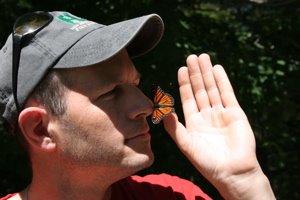
As you may be able to tell from a few of the links posted here I have an interest in saltwater fly-fishing, fly tying, and all things saltwater- streamer related. As such, I recently found myself in a position with access to Virginia White-Tailed deer tails, or as more commonly known, "Bucktails".
As a fly tyer I am continually using this material in my practice of mimicking saltwater fish species, or more precisely, the prey species of MY prey, the Striped Bass (
Morone saxatilis). Because this is a relatively new endeavor for me, and, given there are so many effective saltwater patterns out there requiring this material, I manage to go through lots of tails. Most of which is lost trying to get over the learning curve. In other words, I waste a lot of materials. And since they cost anywhere from $4.00 - $8.00 a piece at your local fly shop, the money adds up quickly. However, when I found myself in a unique position with access to literally hundreds of tails, I decided to learn and prepare my own. It was a win-win situation with a minimal investment of time and money.
I researched around on-line to find out all that is involved with processing tails. In no time I had amassed a sufficient amount of information on everything from curing, to storing to dyeing. I put into practice my new-found knowledge and documented nearly every step as best I could so that there is a more permanent record of my experiences. I have presented them here for you.
These methods are by no means fool-proof and I am sure that anyone that makes money from this will readily tell you my way is riddled with errors. That's ok, remember, this is what works for me. If you are planning to follow these instructions please do so with a grain of non-iodized kosher salt. More on that later.
You will need a good selection of tools as pictured below. My kit includes scissors, a thin blade, pointy sharp knife, and
most importantly, a thread puller (pictured at right). I obtained this one at my local supermarket in the sewing aisle. By far the cheapest and most effective tool to have for de-boning tails.


With bucktail in hand, stroke the fibers to remove any dirt, burrs, or caked blood that may clump the fibers together. I like to flex the tail a good bit with my hands, I feel this loosens the skin a bit and in some instances aligns the bone for a straighter cut later. Begin by making one cut through the skin and fat down to the muscle tissue within. Depending on how the tail was removed from the deer there may be more or less fatty tissue in this region. In this picture the visible "white" is fat, the "reddish-pink" the bone.

Carefully insert the thread puller under the skin taking care not to poke the point down into the tail. This will prevent you from sliding the puller forward and may make the effort messy. Apply a slight upward pressure on the tail and slice the skin an inch or two at a time.

It is important to cut one to two inches at a time because the hair fibers closest to the skin become tangled and matted and will get cut by the thread puller. It may not be significant at the base of the tail however, depending upon which fibers you value the most (base/center/tips) you may end up with a short supply. It pays to stroke the fibers ahead of the puller to "clear a path" through the fibers. This is much easier to do than to explain.
Take care when you reach the tip of the tail with the thread puller. I pinch tip of the tail between my thumb and pointer finger while slowly sliding the puller forward. It is easy to tell when you have reached the end this way. Take care when punching through the tail tip not to stab yourself with the point of the cutter.
With the tail completely opened, use a sharp knife and with short strokes, slice between the skin and the tail. If your knife is sharp it will make short work of this part. Try to remove as much fatty tissue now to avoid intense scraping later.

Notice the tip of the knife positioned between the skin and fatty tissue. This is a good place to begin your slicing.
Carefully work your way up and down both sides taking care to cut completely around the bone tip section. It is important to COMPLETELY Remove tissue connecting the tip of the bone. Failure to do so will result in a clump of hair attached to your bone that could have otherwise been left on the skin.

The last part of the bone to come free is usually at the tip. Place the knife in between the bucktail and bone and slide it as far forward as it will go. Using the flat of your knife blad, apply light downward pressure on the bucktail and gently lift the bone straight up. This will free whatever remaining tissue is left.

Scrape out any remaining fatty tissue and you are finished! With any luck it will look similar (or better!) than these below. With the de-boning out of the way, the hard part is over and you are ready to begin curing your tails.






























